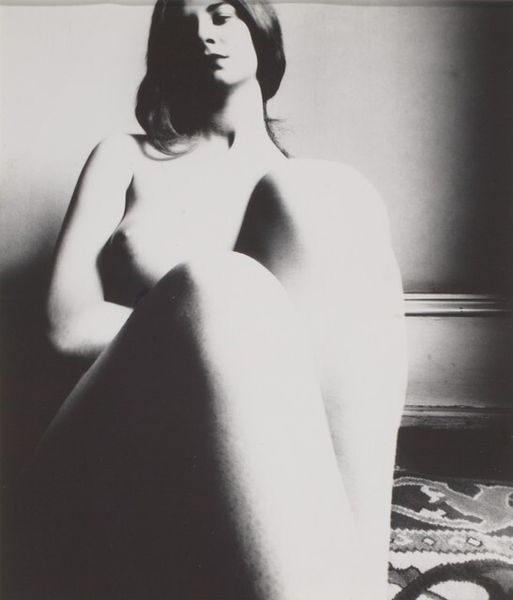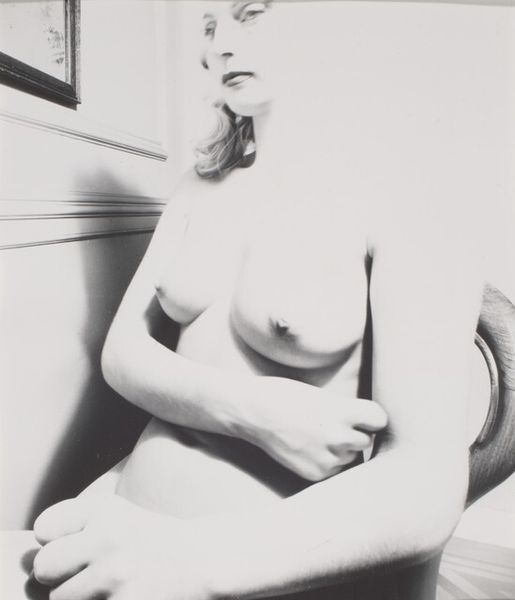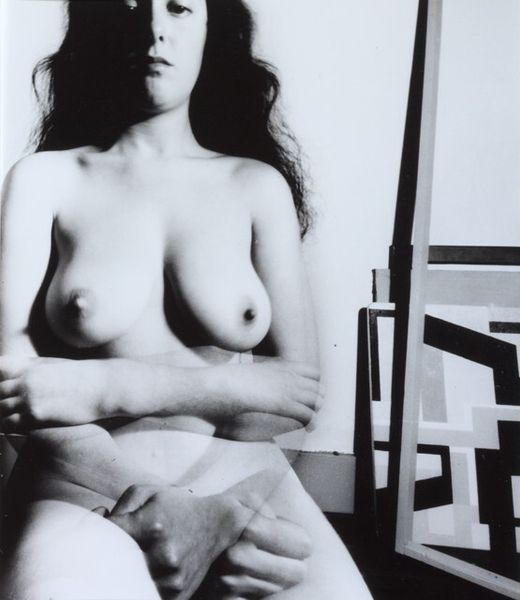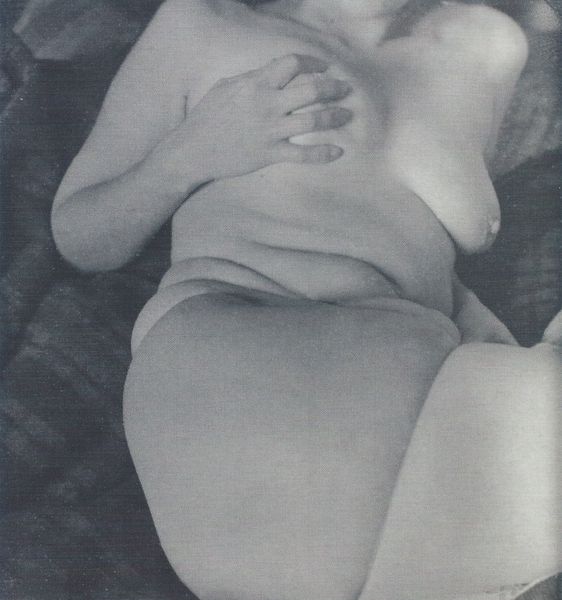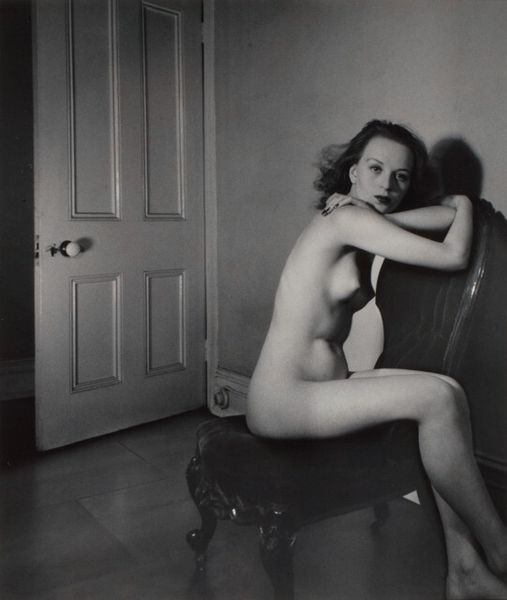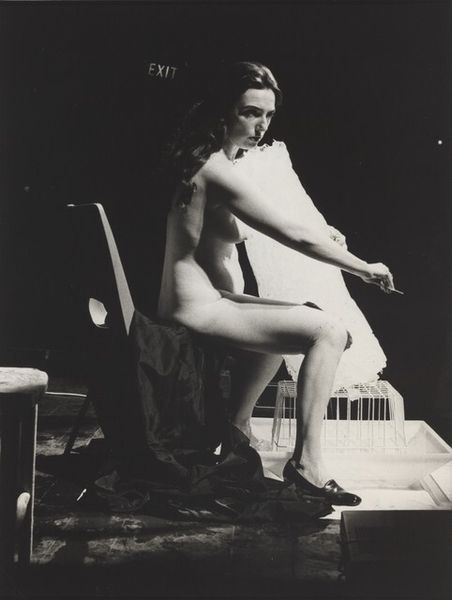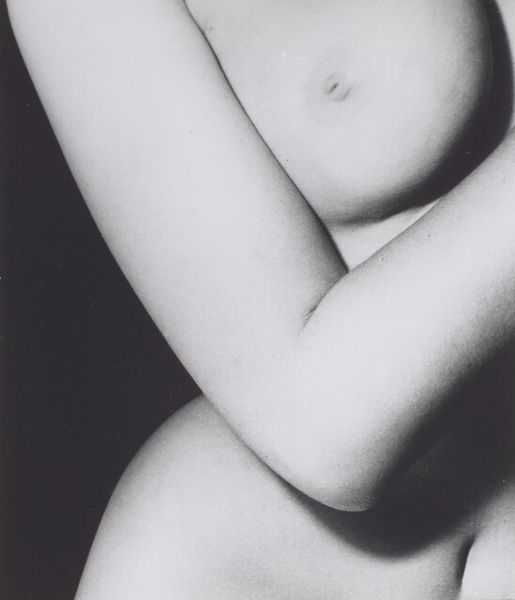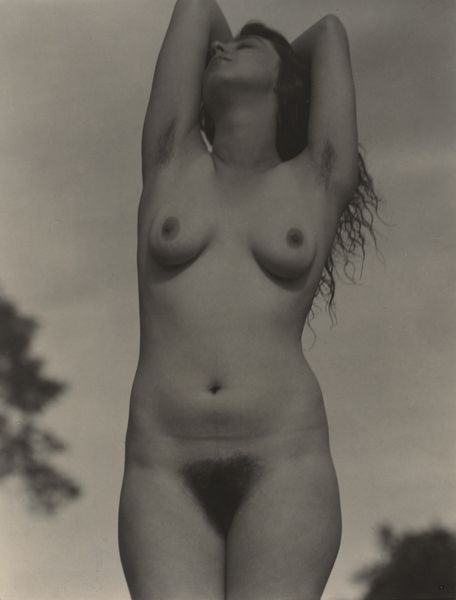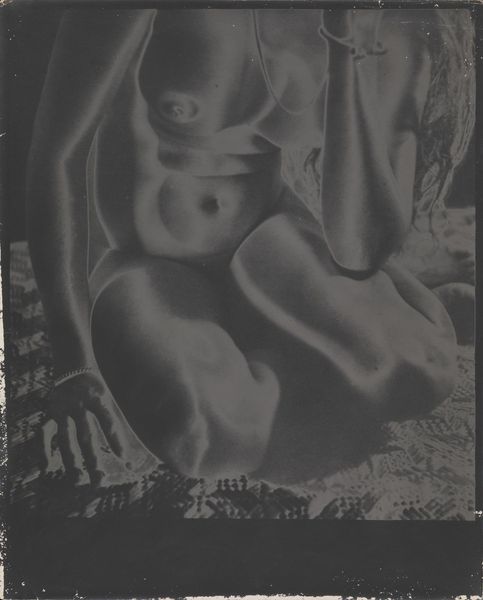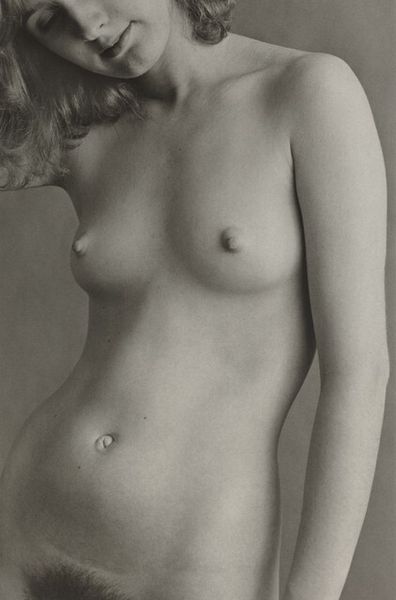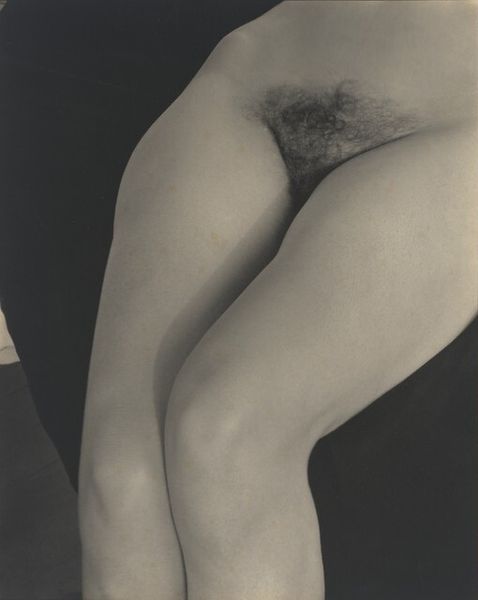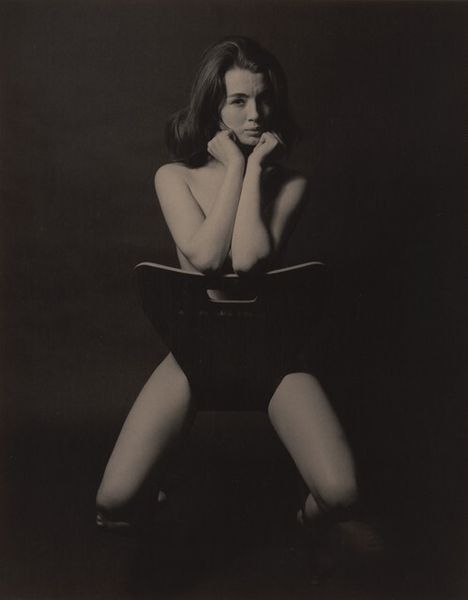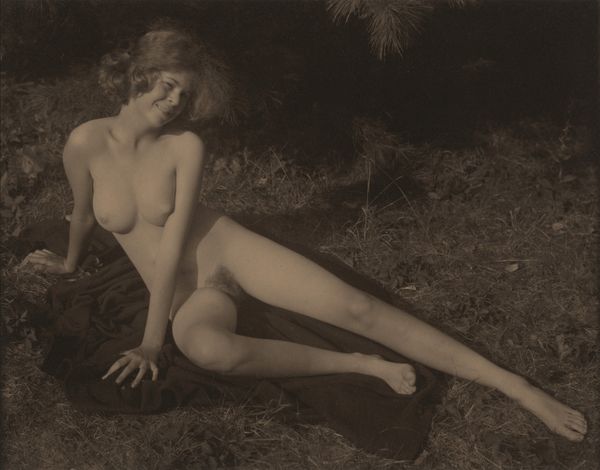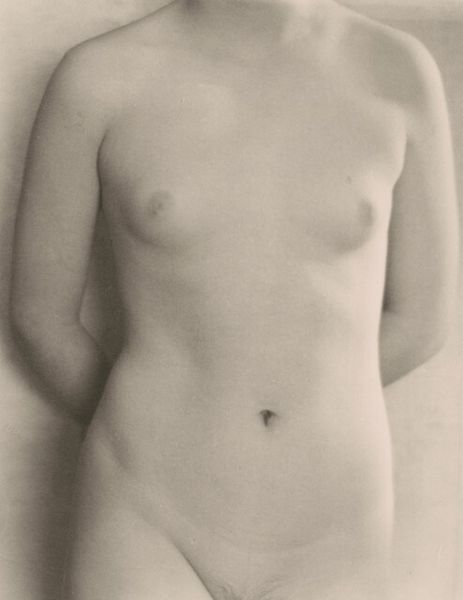
photography, gelatin-silver-print
#
portrait
#
black and white format
#
figuration
#
photography
#
black and white
#
gelatin-silver-print
#
monochrome
#
nude
#
monochrome
Copyright: National Gallery of Art: CC0 1.0
Bill Brandt made this photograph in the mid-20th century, likely with a large format camera and some pretty intense darkroom work. The tonal range is so compressed, like the whole thing is breathing in, holding its breath. Look at how the light glances off the curve of the model’s thigh, then plunges into shadow. It’s like the body is both there and not there, solid yet dissolving into the darkness. There is a softness to the skin, created by the shallow depth of field. The background is spare: a radiator, a surreal lamp, each holding its own space but refusing to offer any narrative context. Brandt's nudes remind me of those by Brassai, both playing with how the camera can fragment and reassemble the body. But unlike Brassai, Brandt seems less interested in the voyeuristic gaze. He is more interested in the formal possibilities, the dance of light and shadow and how it turns flesh into something almost abstract. It’s not about capturing a perfect image, but about feeling the image, and understanding the process as an unfolding conversation with the subject.
Comments
No comments
Be the first to comment and join the conversation on the ultimate creative platform.
